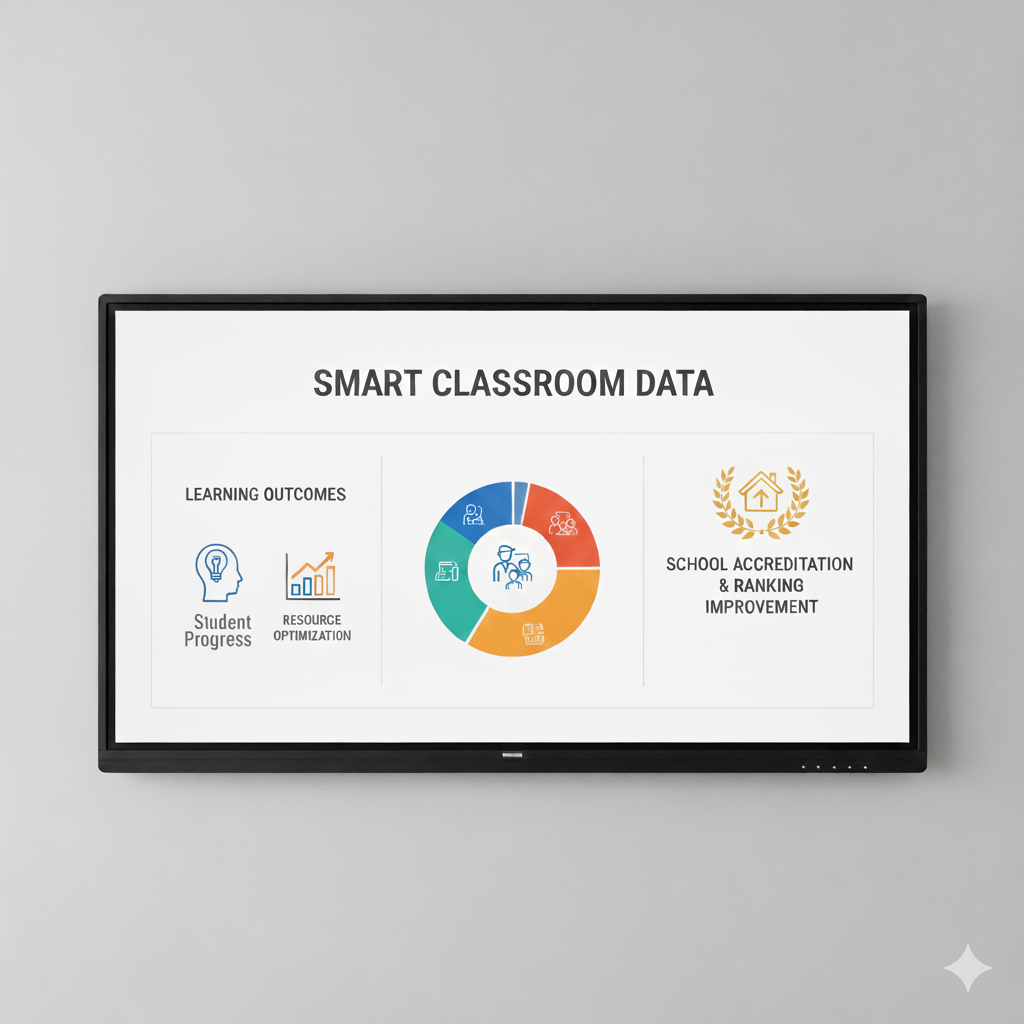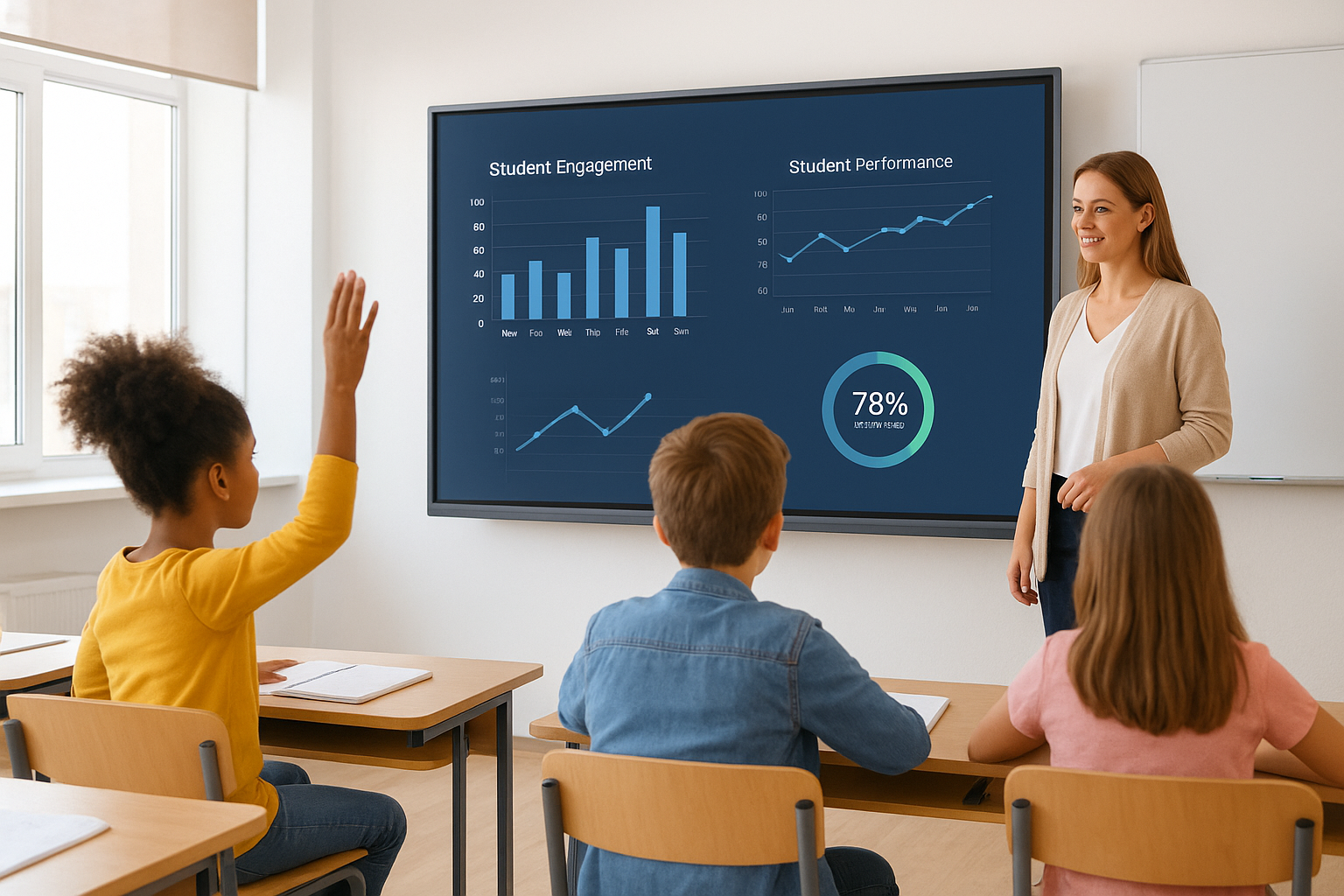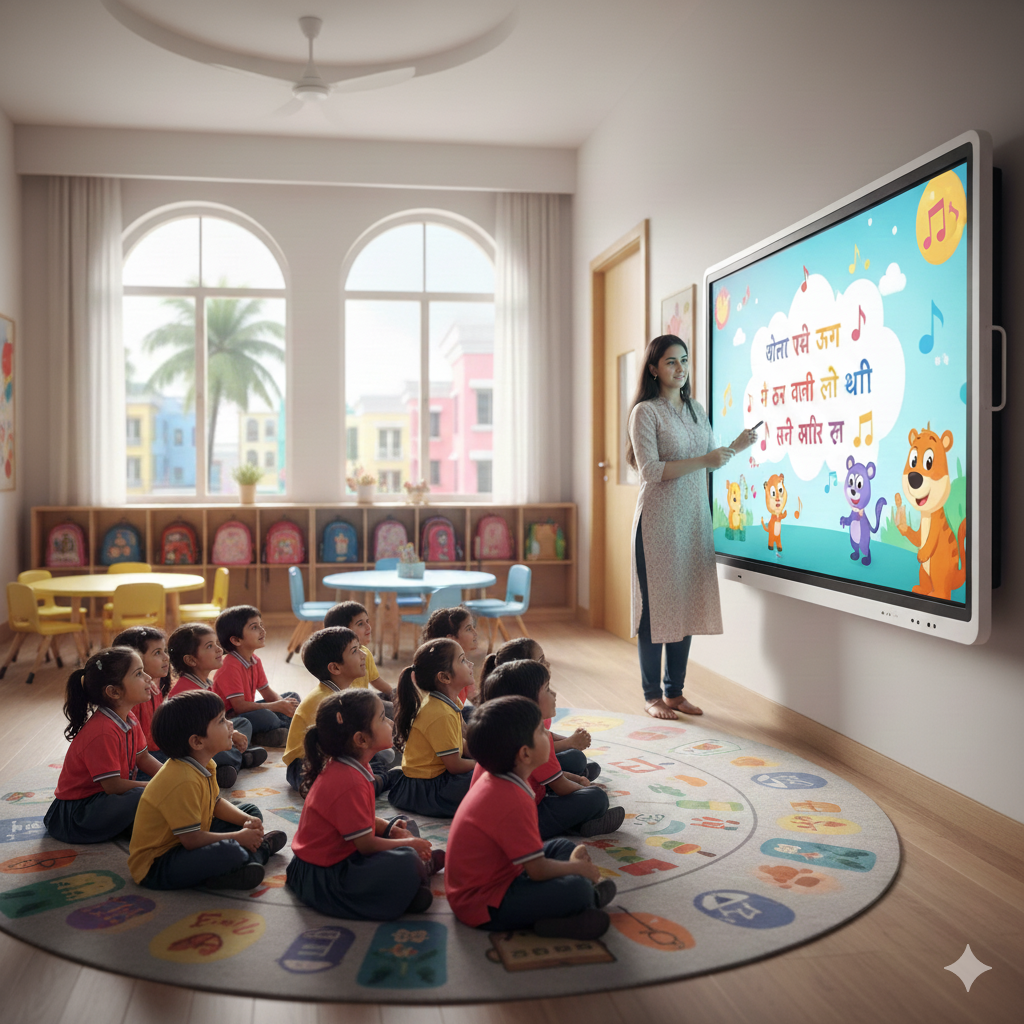How Smart Classroom Data Can Drive School Accreditation and Ranking Improvements

Schools today are under constant pressure to perform better. Accreditation boards and ranking agencies are more demanding than ever. Meeting these expectations requires more than good teaching. It requires evidence. That’s where smart classroom data comes in.
Modern digital classroom setups can capture insights that show exactly how students are learning and how teachers are performing. These insights can become a powerful tool to improve both accreditation and rankings.
Overview of Smart Classroom Data
A smart classroom isn’t just about fancy devices. It’s about the information those devices generate. Every interaction, from a student answering a quiz on an interactive panel to a teacher recording a lesson, produces data. When analyzed properly, this data tells a story about how the school functions.
What Kind of Data Do Smart Classrooms Capture?
- Student Engagement: Attendance, participation, quiz scores, and interactions with learning tools.
- Teacher Activity: Lesson coverage, pace, and use of smart classroom equipment like interactive displays or AI-powered teaching tools.
- Resource Usage: How often hardware, such as interactive panels or classroom projectors, is used.
- Learning Outcomes: Trends in assessments that highlight areas of improvement or success.
Key Smart Classroom Insights That Impact Accreditation Scores
How Is This Data Analyzed?
Most schools now use dashboards that collect information from digital classroom setups. Some tools provide live updates. Others store historical data for trend analysis. AI-enabled systems can flag areas that need attention. The result is a clear picture of both teaching and learning, without requiring hours of manual tracking.
Why Accreditation and Rankings Matter
In India, schools are judged on multiple factors. Boards like CBSE, ICSE, and IB consider not only test scores but also infrastructure, teacher quality, and compliance with curriculum standards. Rankings often consider similar elements, along with innovation in learning methods. Data from smart classrooms can provide evidence for all of these. Instead of relying on anecdotal proof, schools can show metrics that matter.
How Smart Classroom Data Supports Accreditation

Showing Learning Outcomes
Schools can use analytics from smart classrooms to track progress over time. For instance, a student’s quiz scores can reveal which topics need more focus. Aggregated across a class or grade, this data provides concrete evidence of learning outcomes. Accreditation boards value this kind of measurable improvement.
Highlighting Teacher Effectiveness
It’s not just students who are measured. Teacher performance is equally important. Data from smart classroom equipment can show how they engage with students, deliver lessons, and use technology effectively. Schools can then demonstrate that teachers are not just following the curriculum but are actively improving learning experiences.
Demonstrating Efficient Resource Use
Boards and ranking agencies also care about how resources are used. Data from your digital classroom shows that equipment is used efficiently and contributes to learning. This includes showing how interactive panels, projectors, or audio systems are integrated into daily lessons. Efficient usage can set your school apart from others that might have similar infrastructure but less impactful results.
Improving Rankings With Data Insights
Finding Areas for Improvement
Not all classrooms perform the same. Smart classroom analytics can pinpoint weak spots. Maybe a particular subject has lower engagement. Or some teaching methods aren’t as effective. By acting on this data, schools can make targeted changes. Over time, these improvements are reflected in rankings.
Benchmarking Against Peers
Some schools use data to compare themselves with similar institutions. How does engagement in your classes compare to others? Are your students scoring higher or lower? These comparisons can guide strategic planning and help raise your school’s overall standing.
Streamlining Accreditation Submissions
Preparing for accreditation can be stressful. Gathering evidence manually is time-consuming. With smart classroom data, schools can generate structured, ready-to-submit reports. This approach is credible, efficient, and often persuasive to accreditation boards.
Choosing the Right Smart Classroom Setup
Not every smart classroom will give you actionable insights. For meaningful results, focus on solutions that combine reliable equipment, easy-to-use analytics dashboards, and integration with your existing setup. Key things to look for:
- Simple and Insightful Dashboards: Teachers and administrators should easily understand the data.
- Compatibility with Current Systems: Avoid solutions that require a full overhaul.
- Assessment Tracking: Automatic reports reduce manual work and improve accuracy.
- Reliable Hardware: Interactive panels, projectors, and devices must consistently capture accurate data.
Investing in the right setup means the data collected will be trustworthy and actionable. This isn’t just about technology. It’s about making better decisions that improve teaching, learning, and ultimately, accreditation results.
Conclusion
Data is more than numbers. In a smart classroom, it tells the story of your school. It shows how students learn, how teachers teach, and how resources are used. For schools aiming to improve accreditation and rankings, this story is critical. A well-planned digital classroom setup give administrators the tools they need to make informed decisions.
By using data strategically, schools can demonstrate tangible improvements in learning outcomes and operational efficiency. This approach is a pathway to recognition and credibility.
Take Action Today: Consider how a thoughtfully implemented smart classroom setup can give your school the insights it needs to excel in accreditation and ranking evaluations. Roombr’s all-in-one solution combines interactive hardware and intelligent analytics to simplify data tracking. By leveraging Roombr, schools can make informed decisions that improve learning outcomes and strengthen their accreditation and ranking performance. Learn more about our digital classroom solution.
Foziya Abuwala
Share
Step Into the future of
Education with Roombr

















